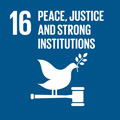- Docente: Anna Di Ronco
- Credits: 7
- SSD: SPS/12
- Language: Italian
- Teaching Mode: In-person learning (entirely or partially)
- Campus: Bologna
- Corso: Single cycle degree programme (LMCU) in Law (cod. 9232)
-
from Oct 06, 2025 to Dec 03, 2025
Learning outcomes
At the end of this course, students will be familiar with the main criminological approaches explaining the relationship between crime, culture and media; they will be able to critically analyse media narratives and recent crime, deviance and control phenomena emerging in digital societies, relying on contemporary examples and on the related scientific literature.
Course contents
The course explores the intersection between crime and the media, with particular attention to how deviance and criminality are represented across various mediums, including television, newspapers, cinema, literature, and social media. It also examines criminologically significant phenomena that characterise contemporary digital society, such as digital vigilantism and the spread of fake news. The course aims to foster a critical and sociological approach among students toward the narratives, images, and phenomena of deviance, crime, and social control that are constructed and reproduced through the media.
In the first part of the course, students will be introduced to the main theoretical frameworks developed within criminology in the broad field of crime and media studies, with a particular focus on traditional media. The second part addresses forms of deviance, criminality, control, and harm specific to today’s digital society, drawing on examples from recent literature in digital criminology. The third part focuses on what can be considered ‘classic’ themes within the cultural criminology of media, such as the criminalization of music (and other creative cultural expressions), representations of policing in literature and television, and the phenomenon of trial by media.
Readings/Bibliography
This course is particularly recommended for students with a good proficiency in English, as the texts required for the exam are written in English.
Main textbook:
- Clifford, K., White, R. (2017). Media and Crime: Content, Context, and Consequence. Oxford University Press.
Recommended readings:
- Jewkes, J. (2015). Media & Crime. 3rd edition. Sage Key Approaches to Criminology.
- Powell, A., Stratton, G., Cameron, R. (2018). Digital Criminology: Crime and Justice in Digital Society. Routledge.
- Salter, M. (2017). Crime, Justice, and Social Media. Routledge.
Additional readings will be flagged in class and through the "Virtuale" platform.
Teaching methods
Lectures will be delivered in person. The course also includes the screening of films and TV series related to the course topics, followed by class discussions, as well as occasional guest lectures by national and international experts.
Assessment methods
For attending students: group presentation in class and a shortened written exam (only 2 questions).
For non-attending students: written exam (3 or 4 questions).
Students with learning disorders and/or temporary or permanent disabilities: please contact the office responsible (https://site.unibo.it/studenti-con-disabilita-e-dsa/en/for-students ) as soon as possible so that they can propose acceptable adjustments. The request for adaptation must be submitted in advance (15 days before the exam date) to the lecturer, who will assess the appropriateness of the adjustments, taking into account the teaching objectives.
Teaching tools
Teaching support materials include PowerPoint presentations and audiovisual materials (films, documentaries).
Office hours
See the website of Anna Di Ronco
SDGs


This teaching activity contributes to the achievement of the Sustainable Development Goals of the UN 2030 Agenda.
